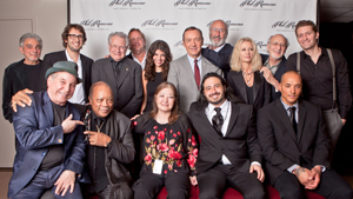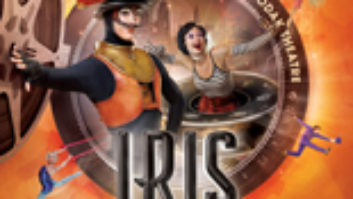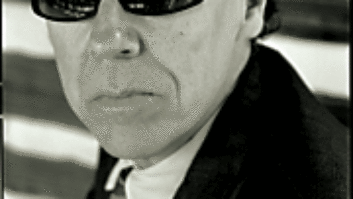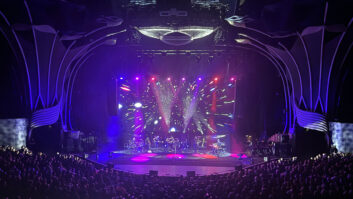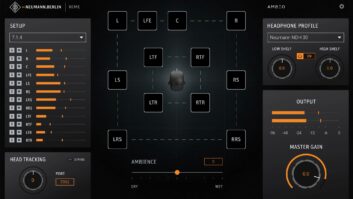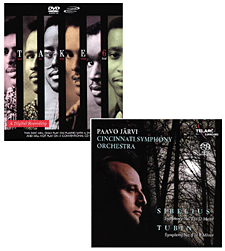
Don’t have your dark suit cleaned just because you think that anyday now, you’re going to be attending a funeral for the compact disc.That format isn’t going anywhere any time soon. Yes, CD sales droppedsome 10% last year, and Internet file sharing has shown itself to be aformidable foe of prerecorded CDs (but actually a boon to blank CDsales). The fact is, the compact disc is one of the most successfulentertainment technologies of all time, and at this point, it ispervasive worldwide. People like the way they sound and like theformat’s portability and durability. Downloading songs off the Internetis still something that relatively few people do at this point, thoughthe financial impact of this practice has undeniably been dramatic thepast two years.
How do you compete with “free”? That’s the conundrumthat’s been tossed around in record company boardrooms with increasingurgency the past couple of years. Tops on the list of solutions seemsto be the notion of somehow training the populace to pay for music at“authorized” Internet sites. This is complicated andfraught with a certain degree of peril, as it involves cooperationamong companies that are traditionally competitors (though the airlinesseem to have worked this out with Orbitz); an admission that thelabels’ historic reliance on the brick-and-mortar model is perhapsoutdated; and appealing to people’s innate sense of morality to eschewthe free online swapping bazaars in favor of legitimate sites thatactually generate revenue for the artists and record companies. Not aneasy task, but not necessarily impossible.
Then there’s the idea of giving consumers more for their CD dollars:the value-added approach. Of course, the relative length of the CDcompared to a traditional vinyl record has always been a selling point.The record companies have raked in millions of dollars by sellingremastered albums that include “bonus tracks”: B-sides,outtakes and other related material to fill out the CD’s 79-minutepotential playing time. But that material is as easily bootleggedand/or ripe for file-sharing sites as any other music on CD, so thatconcept has lost a little of its luster as a marketing tool. Whathas caught on, though, is including in a CD package a bonusDVD-V featuring live footage and music videos, for that extra incentiveto buy rather than download. So far, this practice has not beenwidespread, but it has proven successful for both popular and newbands, and we are likely to see more of it in the coming months. It’stwo media for the price of one, and you can bring in a third when youget into discs that also contain lyrics, biographies, photos and otherinformation that can be read on PCs.
Another area with considerable potential for the music industry ishigh-resolution, multichannel audio. The audio industry has felt thisexcitement for a number of years. Who among us has not marveled at asurround demo at an AES show, or in one of the pioneering 5.1 controlrooms, or salivated at the mere suggestion that we will someday be ableto hear all of our favorite albums in crystal-clear, completelyenveloping, multichannel sound? The industry loves it!
But does the public? Does the fact that people have becomeconditioned to being wowed by crisp, loud, multichannel audio at theirlocal multiplex mean that they want to replicate that experience athome, and with music-only product? Does a generation that thinks MP3and other compressed Internet-friendly audio schemes sound“fine” care about the wonders of 24-bit, 96k clarity or afloor-shaking subwoofer? Do people who have embraced CD and, morerecently, DVD-V want to get involved with another format? Andspeaking of which, “Do I buy SACD or DVD-A, and will any of thesethings play in my DVD-V player, and I don’t think I can fit acenter-channel speaker on top of my digital cable boxand…aaaaugh! Help me, Mister Wizard!”
Okay, calm down. Let’s look at some of these issues and put theminto focus. It really is going to be a cool revolution. And itis coming.
FORMAT FRENZY
Why are we not surprised that the birth of surround audio discs as apopular format has been rather difficult, with competingformats, hardware compatibility issues and consumer confusion? Afterall, the Beta vs. VHS videotape war wasn’t so long ago. Sony andPhilips, developers of the compact disc, were lucky in the early ’80s:They had no competition for a digital audio delivery system, and the CDquickly became a standard. (However, that didn’t prevent both Sony andPhilips from failing spectacularly with two other competing digitaltechnologies: the MiniDisc, which does have its share of users todaybut did not live up to Sony’s high expectations; and Philips’ DigitalCompact Cassette, which virtually no one bought.)
Today, there are two major formats vying for your surround audiodollars: DVD-A, which has been supported by Toshiba, Panasonic andseveral other manufacturers that were part of the DVD Forum; andSony/Philips’ SACD. Until fairly recently, the two systems were whollyincompatible: You needed a different player for each format. Within theDVD-A group, there are also competing encoding schemes offered by Dolby(AC3 and MLP — Meridian Lossless Packing) and DTS Entertainment(Coherent Acoustics digital audio compression algorithm), though mostmultichannel receivers are equipped to handle both. Consumers have beenjustifiably confused by the plethora of hardware choices facing them inthe brave new world of surround audio, and disappointed by the relativepaucity of software offerings for either DVD-A or SACD.
When we asked Jim Kessler, senior buyer for DVD at Best Buy, thenation’s largest home electronics chain, how hardware sales for the twoformats were doing, he replied frankly, “Not very well. I thinkthe biggest issues are, number one, the content and what’s available. Ithink between the two formats, there are still fewer than 1,000 titles,which is not a lot of discs. And then, number two, is what do you playthem on? We’ve taken the stance that having two formats like this isnot customer-centric, so what we’ve really been pushing manufacturersto do over the past two years is create a DVD player that will playboth formats, and that’s finally happening. Pioneer will have a piecemid-year that will play both DVD-Audio and SACD and will retail at only$179. We expect that to do pretty well, much better than the model theyhave now that’s like a $500 or $600 piece.
“Even with the price coming down so low,” he continues,“I believe the target audience is still relatively small foreither DVD-Audio or, especially, SACD. The majority of customers justdon’t listen to music that way anymore: sitting down and reallylistening carefully and picking apart all the different nuances that gointo the music. There is a small percentage of people who do listenthat way, and those are going to be the customers for this product. Ijust don’t think it’s going to be that big a segment any timesoon.”
Naturally, there are many people throughout the industry who hopethat Kessler is underestimating surround audio’s potential. Up and downthe industry, though, there have been complaints that there hasn’t beenenough software to support consumers’ investments in a new player.
“People are smart,” comments David DelGrosso, VP ofmarketing for DTS Entertainment. “They know the differencebetween a format that’s being supported vs. one that isn’t by thenumber of labels and the amount of current product in that format. Thefact is, the support hasn’t been there for DVD-Audio so far. You cangrab the Billboard Top 100 and count how many of those titlesare available on DVD-Audio or SACD, and it’s very, very few. That’s nota format; that’s an audiophile niche — and by the way, it’sserving that community very nicely. But people want to see moredepth to the catalog and more support from the labels before they buyanother piece of audio equipment.”
David Kawakami, director of The SACD Project for Sony, is moreupbeat. “We’re adding about 150 titles per quarter now, soobviously, a lot of professionals are involved,” he says.“We’re especially happy that many of the top producers, artistsand engineers are enthusiastic about producing SACDs. On the consumerfront, the format is starting to go mass-market. There are a widevariety of affordable players from a number of manufacturers, and bandslike the Rolling Stones are selling in the millions. [Pink Floyd’s]Dark Side of the Moon, which comes out on March 25th, will nodoubt be a million-seller.
“Competition is usually good for consumers,” he adds.“It provides the impetus for manufacturers to refine theirformats, products and services so that they offer real value to theconsumer. The trend toward ‘universal’ players makes ithard for a consumer to go wrong. These players play every format, so ifone falls by the wayside, the product is not obsolete.”
It should be noted, however, that there seems to be some confusionamong the general public about the SACD format. It is not exclusively asurround format; it got its start as a high-resolution stereo format,and actually only a small percentage of SACD discs contain surroundmixes. Indeed, when we read about the Rolling Stones recently sellingupward of 2 million SACDs of their older albums, it must be noted thatthese discs did not include surround mixes of those albums and that, asis usually the case now, the SACDs included a conventional CD layer,allowing the discs to be played on a conventional CD player. At thispoint, no one knows what percentage of the people purchasing the discsare listening to the high-resolution versions of those early Stonesgems and how many are just popping them into their cars and portableplayers and listening to the CD layer. Then there’s the example ofaudiophile classical, jazz and blues label Telarc, which has beenroutinely putting out hybrid CD/SACD surround discs for some time nowand racking up impressive sales. There are no numbers to tell us who’slistening to which format; just that sales are brisk and there’sdefinitely a buzz about the SACD layer. In both cases, the hybrid discshave unquestionably given a boost to the surround industry: The morehybrid discs a person owns, the more likely he/she is to eventuallyspring for a system that will reveal the full glory of thehigh-resolution layer.
The Warner Music Group is the largest of the U.S.-based majors toadopt DVD-A, and though they have been slow to release titles, they aredefinitely bullish on the technology. “We feel that DVD-Audio isthe more natural choice of the two formats for the followingreasons,” comments Paul Vidich, executive VP, strategic planningand business development for WMG. “Number one, the extra contentincluded only on DVD-A discs: videos, interviews, photos, etc.; contentthat has proven very popular on DVD-Video discs. SACD does not supportgraphical or video capability. Second, SACD does not have renewablecopy protection, which is clearly an important aspect in today’sclimate. And third, unlike DVD-A, which plays on all DVD players, SACDgenerally requires the consumer to purchase new hardware.”
To clarify the last point: WMG’s DVD-A discs contain a Dolby Digital5.1 mix that can be played on a standard DVD-V player. However, thehigh-resolution surround mix cannot be played on current DVD-V units.As Vidich notes, “We recognized that some consumers might notnecessarily appreciate the difference between the Dolby Digital 5.1 mixand the higher-resolution mix, but our research showed that the vastmajority of consumers could appreciate the difference between a stereomix and a 5.1 mix. We’ve found that music fans simply love the surroundmix, and DVD-A offers consumers the flexibility of enjoying thesurround mix without having to upgrade their equipment.”
Still, no matter how wonderful a great surround mix sounds, there isalways going to be a sizable segment of the population that is simplynot going to purchase the requisite receiver and speakers; in manycases, there are insurmountable space considerations: Some people justhave no desire to move “beyond” stereo music listening. Butthis is an industry still in its nascent stages, and there are changesafoot on many levels, not all of them related purely to music.
GOING MOBILE
“Surround audio is very important for the future of theindustry,” stresses Craig Eggers, director, consumer electronicstechnology marketing for Dolby. “From the Dolby perspective,we’ve seen surround sound migrate from the cinema to the home theater,and it now has also migrated to the PC platform; it’s become extremelyimportant in the gaming community. About 70 percent of the top gamesout there are encoded with Dolby surround sound, and there are more andmore people who are using that as their entry to surround audio. Andthen the car is the next stop.”
Nearly everyone seems to agree that the future of surround audiolies not in the sale of home systems, but in cars.
“My first thought after I heard DVD-Audio was, ‘God,I’ve got to get this in the car!’” Eggers says witha chuckle. “We believe that the car is a natural environment forDolby technologies. And quite frankly, when you look at the demographicthat’s really into souping up their cars, multichannel surround sound— particularly DVD-Audio — really offers that crowd achance to get away from the boom-boom-boom and to get intosomething that’s an extremely compelling experience. And that’s justthe leading edge of the movement. Once the systems start going in carsand people hear it, it’s going to change the way they listen tomusic.”
Adds DTS’ DelGrosso: “I did this presentation six years ago,when I produced some of the first music remixed in [surround] with BoyzII Men and Marvin Gaye, and we had to jury-rig a car, but the equipmentis readily available now. There’s Kenwood, Clarion, Eclipse, Pioneer,Panasonic; there are a lot of great car audio companies that have 5.1decoding. It doesn’t take a lot of research to know that in a lot ofcars on the road right now, there are speakers in the front, speakersin the back and subwoofers. Now, all we have to do is add the center— or not, because there’s still phantom center capability —and maybe beef up the sub and rewire it all so you can put discretesound in each channel. Then you’ve got a system that blows away yourprevious system. They’re already here. In a couple of years, they willbe common.”
AND THE WINNER IS…
It is possible — likely, even — that the widespreadproliferation of surround systems in cars, coupled with the computergaming industry’s continuing embrace of the technology, will lead tomore work for people throughout the audio industry, as well asincreased profits for the record labels and game manufacturers willingto put in some money to put out the software that willhelp drive the boom.
Over the past few years, a number of top recording studios andmastering facilities have invested considerable sums in surround mixingenvironments. Some are, no doubt, wondering when the big return isgoing to come, as the spread of surround has been slower thanoriginally predicted by its most ardent adherents. But eventually, whennew cars are routinely equipped with surround audio systems, the recordcompanies will suddenly have dollar signs dancing in their eyes again,and surround mixes will become nearly automatic on every new project,which will bring more money into the studios and put more cash into thehands of manufacturers who outfit the surround mixing and masteringrooms. And, naturally, you’ll have the opportunity to buy all of yourcatalog favorites one more time — more money for the studios,engineers and labels.
The surround revolution is not going to solve all of the musicindustry’s woes overnight. As Sony’s Kawakami notes, “The marketis very segmented and complex [right now]. Different products appeal todifferent consumer groups. The music-downloading consumer is a verydifferent consumer from the music collector that you’ll find flippingthrough the racks at Tower Records. And for now, the size of the marketfor music moved through brick-and-mortar as packaged media dwarfs anyof the electronic music-distribution models.”
Warner Music Group’s Vidich says, “While WMG is stronglycommitted to helping create a legitimate market for music on theInternet, and has made a catalog of tens of thousands of trackscommercially available for a variety of online services, we feel thatoptical disc-based formats offer the highest-quality music enjoymentthat simply cannot be made available over the Internet due to theextremely large amounts of data that are required. There continue to behundreds of millions of satisfied buyers of optical media — CDand DVD — around the world, and we expect these physical musiccarriers to be an important part of the industry for years tocome.”
Even so, it’s important that the brick-and-mortar model continuallyhas something new and exciting to offer — like surround. Ithelps, too, that DVD-A and SACD are very difficult to pirate thanks totheir technical complexity and the various value-added extras that areturning up more and more on the DVD-A discs in an effort to make them abetter value than regular CDs and more in line with the wildlysuccessful DVD-V format.
“Right now,” comments Dolby’s Eggers, “the CDrepresents a handshake between the consumer and the record company, andit’s a one-time handshake. But it can be so much more. With DVD-A,you’ve got a video feature, so you can have interviews with the band onthere, or lyrics, sheet music, more album art. Why not put Websites onthe disc itself? Why not put the artist’s fan club on there? Wecan put the record company’s Website on there. Take it one stepfurther. I don’t think record companies have a problem with me makingcopies of content if it’s for my own personal use. If that’s truly thecase, why not put an MP3 of that content on the disc itself so theconsumer doesn’t have to rip it? It’s there for them to be able to takeit and move in to their portable players, etc. In other words, DVD-Acan be about a lot more than just a superior-sounding audio product.And it becomes more than just me giving the record companies and theartists some money and them giving me a shiny, silver disc. It makesthe whole exper ience of purchasing and listening to music much moreinteractive, and that will be good for everyone.”
Mastering Both Ways
When we spoke to Stephen Marcussen, whose Marcussen MasteringStudios in Los Angeles has done pioneering work in both the SACD andDVD-A formats, he noted, “Being a studio owner, I can tell youthat equipping a multichannel room is an expensive proposition,especially the way I’ve done it. We have a custom console that’scompletely handmade. Right now, there’s only so much surround work togo around, and if I were building a studio today, I don’t know if I’dbuild a surround room. Two years ago, I almost regretted it. Butclearly, surround will grow and people will grow into it. I hopeso,” he adds with a laugh.
Does Marcussen have a preference between DVD-A and SACD? And is oneeasier or less expensive to work with? “My take is that they bothsound great,” he says. “If they’re handled poorly, eitherone of them can sound bad. I don’t think there’s anything wrong withthe formats. I think that Dolby and DTS sound good, too. I think 96k isreally solid. I enjoy it. And I particularly enjoy it when we’re notbeing hyper-competitive and smacking everything up into the last dB.When you’re able to be realistic about utilizing the format, it can bereally impressive; some of it is absolutely stunning.”
As for the cost of mastering a typical surround project, Marcussensays that 5.1 usually adds about a full day of work on top of the2-channel master. “It is an expensive world to work in, buteverything the client can do to get the bookkeeping in line in advancereally cuts the cost. You don’t want to pay me to sit around anddetermine whether the master take is A, B or C.”
Working in the two formats is different, “because DVD-A isPCM, we get to use more tools,” he adds. “The technology ismore accessible. You can plug in your favorite digital box on it;whereas in an SACD world, there are no external digital boxes that areequalizers or limiters or compressors or any of those tools. Working inSACD, you have to really be on top of your game.”
— Blair Jackson
